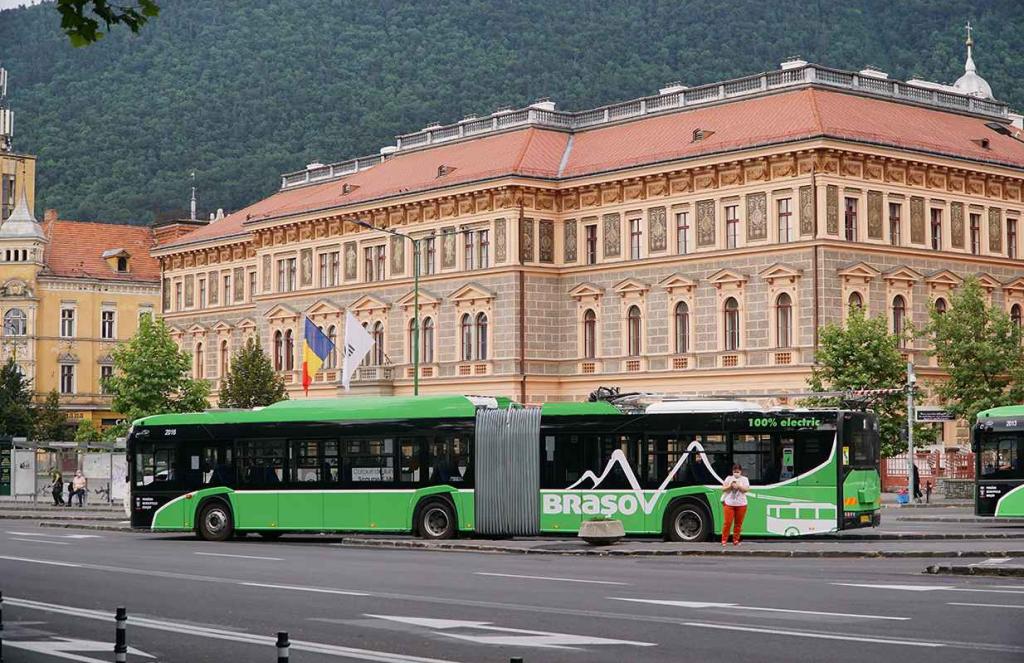Thessaloniki gets ready for its metro launch in November
The underground rapid transit lines have been under construction for almost two decades due to various project delays
 TheMayor.EU logo
TheMayor.EU logo 
Trolleybuses are just the first part of a multi-stage plan for sustainable mobility in the city , Source: City of Brasov
The new vehicles were purchased in 2019 to kick off the city’s sustainable mobility plan and they are already paying off
In a recent statement, the mayor of Brasov, in Romania, Allen Coliban announced that the city’s 51 all-electric trolleys have run for a total of 2 million kilometres. The trolleybuses were purchased back in 2019 with the aim of improving the air quality and passenger experience in Carpathian city.
The vehicles reached the milestone on 10 January and according to municipal sources, they have reduced pollution by 3,300 tons of CO2, 75 tons of nitrogen oxides, 31 tons of carbon oxide and 1.5 tons of fine dust particles.
Just for comparison, the 3,300 tons of CO2 is the rough equivalent of more than 8 million miles driven by an average passenger vehicle, according to calculations by the United States Environment Protection Agency.
Mayor Coliban used the occasion to announce this year’s planned second stage of public transport expansion. Among other things, the second stage of urban mobility expansion in Brasov includes a 3-million-euro feasibility study into the metropolitan rail.
The trolleybuses were purchased in 2019. 26 were financed through European funds and the Ministry of Regional Development, while the rest were financed through the Municipality and European Regional Operational Programme 2014-2020.
Furthermore, the trolleys were meant to address several specific needs, regarding Brasov’s sustainable mobility plan. Namely, these include replacing the ageing existing fleet and ensuring enough vehicles for peak hours.
According to municipal data, the fuel consumption of the existing fleet was 10% higher than the average for a city of that size. At the same time, the new trolleybuses were expected to move 2,1 million passengers annually.

The underground rapid transit lines have been under construction for almost two decades due to various project delays

Now you can get your wine in Talence by paying directly in Bitcoin

That’s because the state has to spend money on updating the railway infrastructure rather than subsidizing the cost of the popular pass

Rethinking renewable energy sources for the urban landscape

The examples, compiled by Beyond Fossil Fuels, can inform and inspire communities and entrepreneurs that still feel trepidation at the prospect of energy transition

Now you can get your wine in Talence by paying directly in Bitcoin

The 10th European Conference on Sustainable Cities and Towns (ESCT) sets the stage for stronger cooperation between the EU, national and local level to fast track Europe's transition to climate neutrality.

At least, that’s the promise made by the mayor of Paris, Anne Hidalgo

The underground rapid transit lines have been under construction for almost two decades due to various project delays

At least, that’s the promise made by the mayor of Paris, Anne Hidalgo

Hostal de Pinós is located in the geographical centre of the autonomous region

Despite its church-y name, the district has long been known as the hangout spot for the artsy crowds

Urban dwellers across the EU are having a say in making their surroundings friendlier to people and the environment.

Forests in the EU can help green the European construction industry and bolster a continent-wide push for architectural improvements.

Apply by 10 November and do your part for the transformation of European public spaces

An interview with the Mayor of a Polish city that seeks to reinvent itself

An interview with the newly elected ICLEI President and Mayor of Malmö

A conversation with the Mayor of Lisbon about the spirit and dimensions of innovation present in the Portuguese capital














